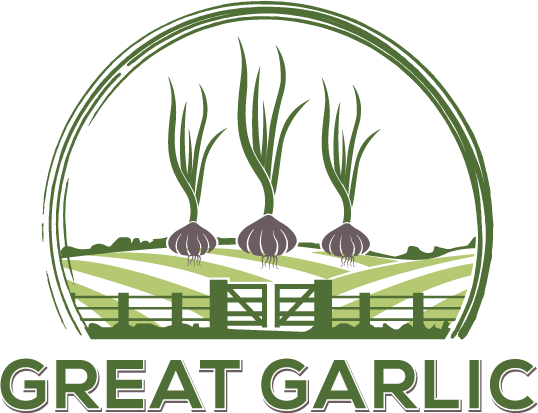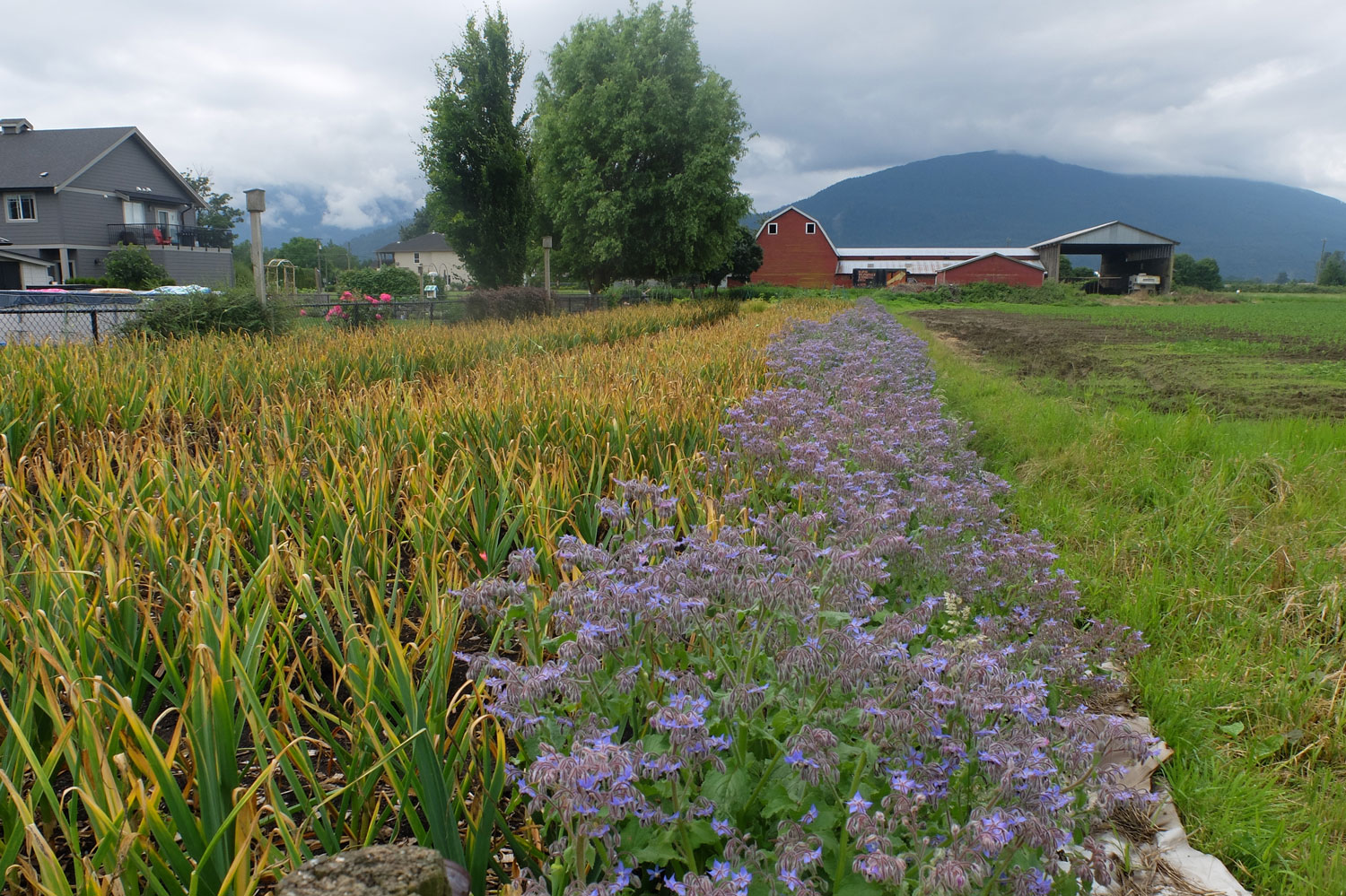CERTIFIED ORGANIC PACS #16-908
You may find yourself wondering, “what does the label Certified Organic mean”? The short answer is a lot!
In British Columbia and Canada, Organic is regulated by the government and must follow national standards, while natural is a marketing term used by farmers and food companies based on their own definition and standard of what is natural. This means that anyone can use the word natural or naturally grown on their products, however it may not be Certified Organic.
To be Certified Organic, you must apply and have been inspected by a government approved organic certification agency such as PAC (Pacific Agricultural Committee). After the initial inspection and certification, you then must have regular inspections to ensure that all farming is done organically. To put it simply, if you want to ensure your food is organic, Certified Organic is the only way to go. It is a guarantee that the food is 100% organic, backed by government regulations.
Great Garlic grown here on our farm, Green Acres Family Farm is Certified Organic by the Pacific Agricultural Certification Society PACS # 16-908.
Click here to learn more about PAC Step-by-step guide to Organic Certification: https://pacscertifiedorganic.ca/learn
Interested in learning more about the regulatory bodies? Check out some of these links:
- Organic BC: https://organicbc.org/
- PAC: https://pacscertifiedorganic.ca/
- Canada Organic Trade Association: https://www.ecocert.com/en-CA/certification-detail/organic-farming-canada-cor
- Non GMO Project: https://www.nongmoproject.org
COVER CROPPING AND CROP ROTATION
Cover cropping is as much a pillar of No-till farming and/or gardening as crop rotation and weeding. Feeding the soil is an integral component of any gardener’s toolkit. Whether you are buying a new bag of soil to add to your patio planters, using your own compost or cover cropping with green manure, your objective is all the same: adding matter (in our case, organic matter) to the soil to provide food for the micro-organisms that call your soil home. These fungi and microbial bacteria form a bond with your crops, working for the crop to break down organic matter and minerals and transform them into nutrients that the crop is easily able to take up through their root system. It is a beautiful, symbiotic relationship that needs some care to maintain. There is great further reading on this topic published by the Rodale Institute.
These beautiful cover crops are such a great way of preserving the integrity and the biodiversity of the soil through the winter months. Each crop was planned for and chosen carefully so that it would provide the soil with more nutrients when it leaves then what was already there when it was planted. These crops are an integral part of no till farming practices as they build upon and nourish the delicate ecosystems within the soil.
Being relatively new to cover cropping ourselves but enthusiastic about nourishing our soil, this year we chose a mix of crops that would provide nutrients while replenishing the soil and suppressing weeds , but would also be easy to cut and use as green manure in the spring before planting. We chose the following mix of cover crops:
- Fall Rye is perfect for blocking and even potentially eliminating pesky weeds. It is also a soil builder as it builds organic matter and helps protect against water and wind erosion. Fall Rye can be easily cut back and left as green manure, which provides your soil with a rich source of nitrogen when left to decompose.
- Crimson Clover not only attracts beneficial insects and pollinators, but it is also a nitrogen source. When cut off and left as green manure, it should break down within ten days, making the soil ready for planting your next nitrogen loving crop. It is also a soil builder as its root system helps prevent erosion.
- Fava Beans are also nitrogen fixers! They add more nitrogen than they take out when used as a green manure. They improve soil texture, help suppress weeds, support microbials in the soil food web, attract pollinators with their beautiful flowers, and they are edible.
These cover crops will add nutrients and organic matter back into the soil, which will leave it better than before and ready for the next crop! In our case, we practice a three-crop rotation. This means that after every garlic harvest – which is our main crop – we will plant a minimum of two successive cover crops before planting garlic again.
Garlic is a crop that, once it is harvested, best practices are to make sure and remove all the left-over plant matter, unwanted bulbs, leaves and stalks. Do not compost it. It must be removed and destroyed, and not used for compost. The reason for this is that if you have attracted any viruses or garlic specific disease you will just be putting it right back into the soil to multiply and take a stronger hold on the next garlic crop you plant. It is for this very reason that we practice a three-crop rotation. The two crops planted in between garlic help not only to nurture the soil by feeding the micro-organisms but also break the disease and/or virus cycle that could potentially be present due to garlic.
NO-TILL / NO-DIG FARMING
The reasons for our decision to no-till or no-dig farm are quite simple. Scientific studies have shown that no-till farming and no-dig gardening if practiced by enough farmers, could be a leading factor in reducing or even reversing climate change. By not tilling the soil you help the soil retain the carbon that plants capture through photosynthesis and store through their roots in the soil. As well you improve your soil health by not killing the beneficial bacteria and microorganisms living in the soil.
The other major reason is that over the long haul no-till gardening and organic no till gardening is more cost effective while giving you higher yields. It also significantly reduces or eliminates the hardest garden work of all WEEDING!!! Who does not want that? A great teacher, Richard Perkins, has much to say on the subject.
RAISING FROM BULBILS
When you grow your garlic from bulbils, it helps reduce the transfer and spread of any garlic viruses. As well, if you are trying to build up your inventory, you will end up with exponentially more bulbs than when you are growing from cloves. Farmers who have tried growing from bulbils almost all claim that garlic grown from bulbil is healthier and larger on average than garlic that is grown from cloves. The reason most farmers grow from cloves is because of time to maturity. It takes one season to grow and harvest your crop from a clove. Growing from bulbils will take anywhere from three to five years, depending on the cultivar, to harvest your crop. We would encourage everyone with the room and patience to try growing some of their garlic stock from bulbils. However, if you do not have the time or patience for this, GOOD NEWS, we grow lots and sell them along with our seed garlic bulbs.



